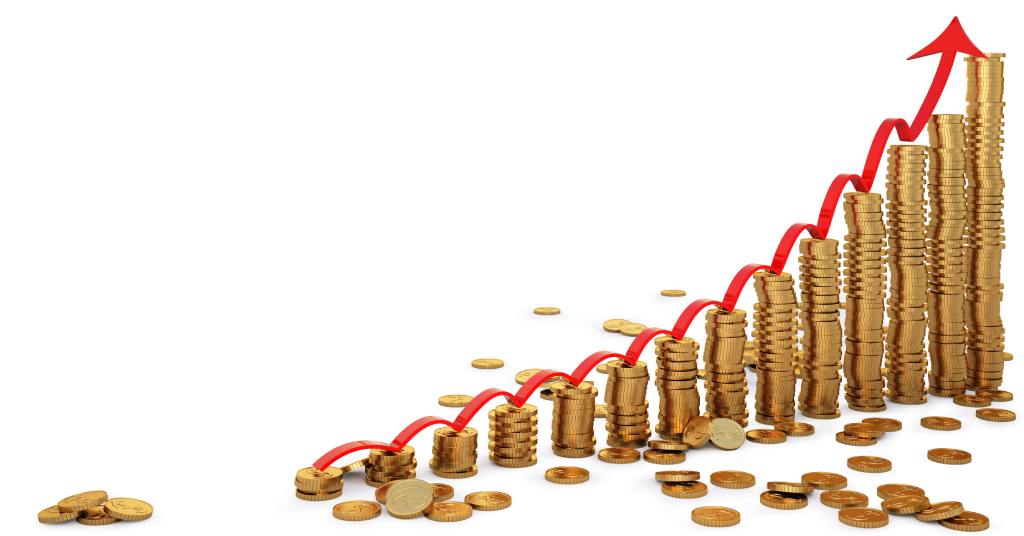Let’s discover where the purchasing power fell the steepest

10 countries with record inflation: what’s going on there and why did it happen? Source: depositphoros.com
This year, many countries all over the world are facing unprecedented inflation levels.
- Venezuela — 1198% (as of January 2022)
- Sudan — 340.0%
- Lebanon — 201.0%
- Syria — 139.0%
- Suriname — 63.3%
- Zimbabwe — 60.7%
- Argentina — 51.2%
- Turkey — 36.1%
- Iran — 35.2%
- Ethiopia — 33.0%
Venezuela
According to experts, Venezuela’s economy first began to experience hyperinflation during the first year of Nicolás Maduro’s presidency (2013). The most important reasons for this event were heavy money-printing and deficit spending. In 2020, when the whole world suffered from the pandemic, inflation in the country reached a stunning 2,959.8%. Thus, even topping the current list, Venezuela tamed its inflation down to its lowest level in almost a decade this March. The slowdown is possible since the national government began easing foreign exchange controls to allow a wider circulation of hard currency, leading to more stable prices. And yet, the downward trend could be reversed soon after the implementation of a tax on operations in hard currency, aimed at boosting the government’s income. Therefore, Venezuela is likely to top the highest inflation rate chart for the months to come.
Sudan
Sudan has a long history of growing inflation due to the central government’s deficit financing and from borrowing by state corporations, shortages of consumer goods, problems of supply caused by transport deficiencies, and increased private-sector borrowing. In 2020, the situation worsened, requiring humanitarian assistance. In early 2021, the government began implementing economic reforms, and already in September the policy changes started bearing some fruit. However, after the October 25 military coup, the World Bank and the US announced the suspension of all aid to Sudan. As the poor macroeconomic situation persists, economic support by the international community remains on hold. Thus, Sudan citizens suffer a lot from above-average food prices and reduced household purchasing power.
Lebanon
Lebanon’s inflation has skyrocketed in the past two years in the ongoing financial and economic crisis. The Spring 2021 Lebanon Economic Monitor suggested that Lebanon’s crisis is likely to rank in the top 10, possibly top three, most severe crisis episodes globally since the mid-nineteenth century. The country defaulted on $30 billion of Eurobonds in 2020. The banking sector has ceased lending and does not attract deposits. National authorities are doing little to prevent inflation, monitor and contain retail prices, as well as the deteriorating Lebanese pound’s exchange rate on the parallel market. The central bank is running out of cash, and has repeatedly warned the government about continuing subsidies on hydrocarbons. This February, the country’s economic meltdown worsened leading to more talks with the IMF for a bailout package. Meanwhile, public debt continues to rise, having reached $100B, or about 212% of GDP.
Syria
The Syrian economy suffers from conflict-related hyperinflation. The Syrian civil war started back in 2011 and continues to date. Many houses and infrastructure objects have been destroyed. More than half of the pre-war population (about 11 million people) have been displaced. Today the poverty rate in Syria is an unprecedented 90%. A secondary impact on the Syrian pound crash was caused by the Lebanese central banking authorities which put restrictions on the amounts of hard cash and cash transfers individuals and businesses could take out or process in 2020. It was meaningful as the Syrian private sector has been linked to Lebanese financial institutions for decades.
Suriname
Suriname went through several phases of inflation caused by macroeconomic, political, and external factors. High inflation was mostly the result of excessive money creation by the Central Bank of Suriname to facilitate the central government and a depreciation of the parallel exchange rate. Political turmoil also didn’t help the economy grow. Corruption and mismanagement eroded the public’s trust in financial institutions from 2015 to 2020. Lack of transparency, an oversized public sector, high energy subsidies, and insufficient diversification are among the ongoing challenges for the new government that aims to stabilise the country’s economy. Besides, high commodity export dependence has left the country vulnerable to external shocks. Therefore, the unstable global situation has a high impact on Suriname’s national currency.
Zimbabwe
The cause of Zimbabwe’s hyperinflation is attributed to numerous economic shocks. Political corruption along with a fundamentally weak economy led to rising national debt. In response, the national government increased the money supply. Back in 2009, the government abandoned printing Zimbabwean dollars altogether. Since then Zimbabwe has used a combination of foreign currencies, mostly US dollars. Zimbabwe began experiencing severe foreign exchange shortages, exacerbated by the difference between the official rate and the black market rate. After years of hyperinflation, the country officially dropped the Zimbabwean dollar in 2015 and introduced a temporary multi-currency platform. In 2019, the authorities introduced a new Zimbabwe Dollar as the domestic currency alongside a foreign exchange foreign currency auction system in 2020 to improve transparency in the foreign currency market and facilitate the discovery of a market-based exchange rate.
Argentina
The initial steep price increase in Argentina was fueled by the rapid expansion of the money supply serving the needs of the government. The country has been going through repeated cycles of hyperinflation followed by attempts at stabilisation for decades. Chronic high inflation affects the way Argentines spend, save and think as spiralling food and fuel prices dent the value of salaries and savings. The grain-producing country’s annual inflation rate was already running at over 50% this year, when Russia’s invasion of Ukraine led to skyrocketing global commodities costs. Meanwhile, a drought in Argentina had hit grain production hard. The government has imposed caps on some grains exports and price freeze agreements on some foods. The government has also drafted an economic plan as part of a $45 billion deal with the IMF that targets inflation of 38%-48% this year.
Turkey
Rising prices in Turkey are part of an economic crisis exacerbated by the COVID-19 pandemic. Critics have blamed the soaring prices on President Erdogan’s economic policies, which favour lowering interest rates to boost growth and exports. The country’s unconventional monetary policy has spooked foreign investors, who are massively dumping Turkish assets. Russia’s invasion of Ukraine and the resulting surge in gas, oil and grain prices has also compounded inflation in Turkey,which is heavily reliant on imports. Consumer prices rose by 69.97% in April compared with the previous year. The biggest price increases in Turkey were in the transportation sector as well as food and non-alcoholic beverages.
Iran
While relatively diversified for an oil exporting country, Iranian economic activity and government revenues still largely rely on oil revenues and have, therefore, been volatile. Iran’s weak economy suffered from mismanagement for decades, but sanctions, particularly on the crucial energy sector that block the government from selling crude oil abroad, have hastened the decline. Besides, the agriculture sector has contracted recently, due both to the drought and energy blackouts. With U.S. sanctions linked to Iran’s nuclear program strangling the economy, record-breaking inflation hit Iran last year. Food prices skyrocketed by nearly 60%. High inflation harms the economy and may foment political unrest. Thus, President Ebrahim Raisi has made controlling inflation a pillar of his economic policy and submitted a contractionary budget to the parliament this year. Still, Tehran’s ability to curb inflation in 2022 rests primarily on the fate of the ongoing nuclear negotiations, which could lead to the lifting of U.S. sanctions.
Ethiopia
The surge in Ethiopia’s inflation rate is mainly driven by a significant increase in food prices. Although the Ethiopian government took various policy actions including monetary, fiscal, and structural measures to control price escalations, the inflation levels remain in the double digits. Food prices went extremely high, due to the weak domestic market supply along with global agricultural production constraints. The months-long war in the country had contributed to the surge in inflation, disrupting both farming activities and supply chains in the country. This January Ethiopia was officially delisted from the African Growth and Opportunity Act (AGOA) – a duty-free trade arrangement between African countries and the USA. Analysts worried that the country’s removal from AGOA would lead to catastrophic economic effects, including thousands of job losses.
SEE ALSO:









